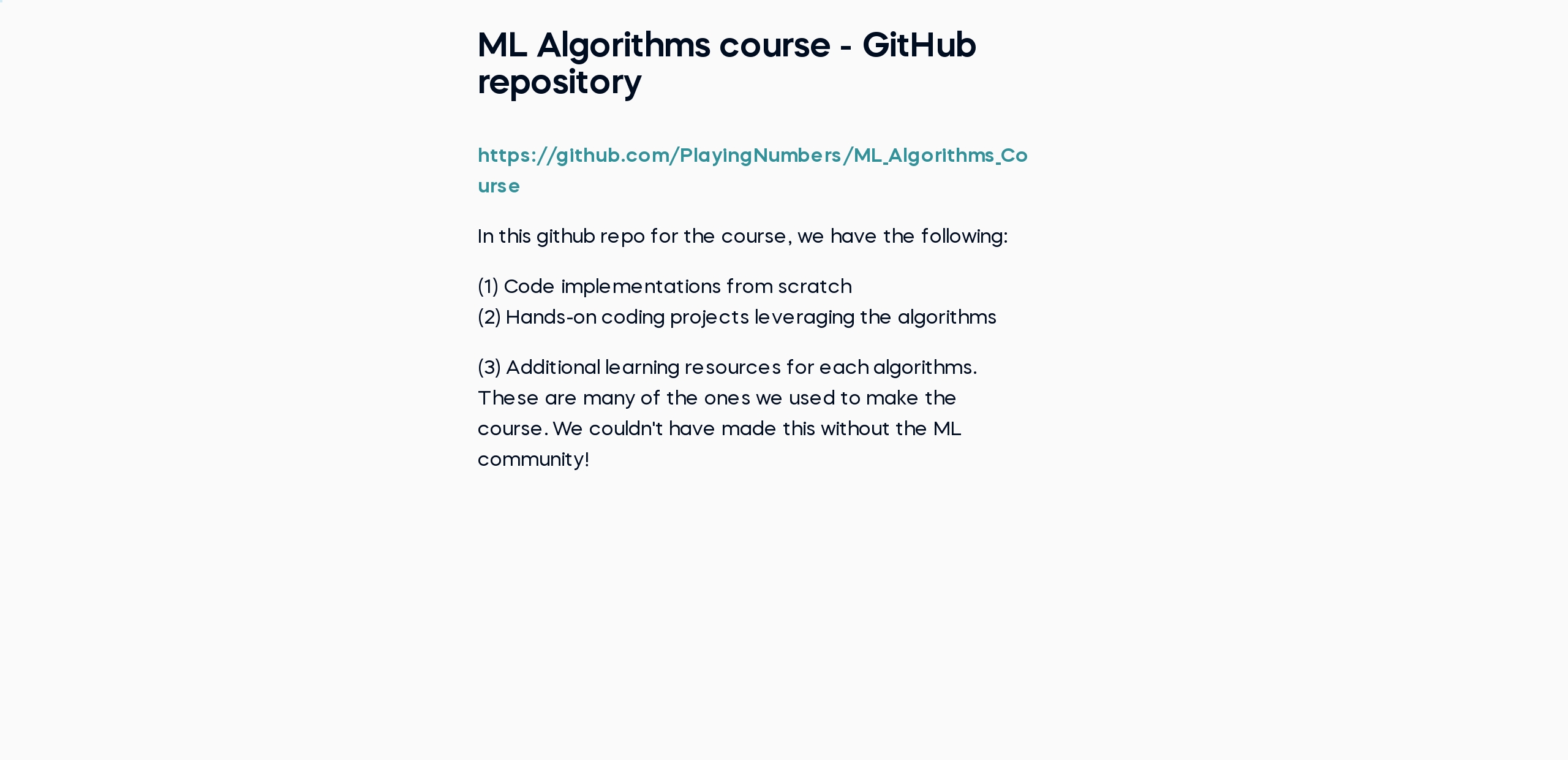The Machine Learning Algorithms A-Z
Master the core concepts of popular ML algorithms: understand when and how to apply different machine learning techniques effectively
 Start for Free
Start for Free
What you get:
- 5 hours of content
- 107 Interactive exercises
- World-class instructor
- Closed captions
- Q&A support
- Future course updates
- Course exam
- Certificate of achievement
 Start for Free
Start for Free
What you get:
- 5 hours of content
- 107 Interactive exercises
- World-class instructor
- Closed captions
- Q&A support
- Future course updates
- Course exam
- Certificate of achievement
$99.00
Lifetime access
 Start for Free
Start for Free
What you get:
- 5 hours of content
- 107 Interactive exercises
- World-class instructor
- Closed captions
- Q&A support
- Future course updates
- Course exam
- Certificate of achievement
What You Learn
- Acquire machine learning skills that bridge theoretical knowledge and practical application
- Gain insight into the strength and limitations of various machine learning models
- Build confidence in selecting the optimal machine learning algorithm needed for specific use cases
- Understand fundamental machine learning theory that will help you achieve outstanding real-world results
- Acquire the business intuition to discern whether a problem requires machine learning or can be solved through simpler analytical methods
- Improve your career prospects with in-demand machine learning skills, essential for your success in an AI-driven world
Top Choice of Leading Companies Worldwide
Industry leaders and professionals globally rely on this top-rated course to enhance their skills.
Course Description
Learn for Free

1.1 Introduction
2 min

1.2 ML Algorithms course - GitHub repository
1 min

1.3 How to Use this Course
1 min

1.4 Types of ML Problems
1 min

1.6 Additional Resources
1 min

2.1 Linear Regression
1 min
Curriculum
Topics
Course Requirements
- You need to complete an introduction to Python before taking this course
- Basic skills in statistics, probability, and linear algebra are required
- It is highly recommended to take the Machine Learning in Python course first
- You will need to install the Anaconda package, which includes Jupyter Notebook
Who Should Take This Course?
Level of difficulty: Advanced
- Aspiring data scientists and ML engineers
- Existing data scientists and ML engineers who want to boost their skills and learn from world-class experts
Exams and Certification
A 365 Data Science Course Certificate is an excellent addition to your LinkedIn profile—demonstrating your expertise and willingness to go the extra mile to accomplish your goals.

Meet Your Instructor

Jeff is a senior data scientist at a large music streaming platform and is focused on forecasting problems surrounding ads. He got into data science by trying to earn a living playing poker and previously spent two years at Door Dash on their core ML team (he was working on a wide variety of problems such as improving experimentation power, personalization, and supply/demand forecasting). In his courses with 365, Jeff is willing to share valuable practical insights he learned on the job. Prior to starting his data science career, Jeff worked in technology consulting. He graduated the University of Southern California.
What Our Learners Say
365 Data Science Is Featured at
Our top-rated courses are trusted by business worldwide.